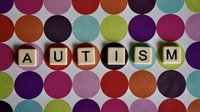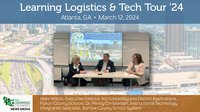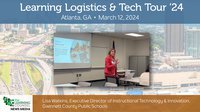Ransomware 'halts everything' in Connecticut school district – By Colin Wood, EdScoop
Administrators at Wolcott Public Schools, a K-12 district of five schools in Western Connecticut, announced Thursday they are recovering from a cyberattack that hit their computers during the last week of school last June.
The district’s computer systems were locked up by ransomware, a type of malware that demands payment in cryptocurrency before control of the systems and data is returned. Wolcott Superintendent Anthony Gasper told the Republican American, a local news outlet, that the district worked with cybersecurity experts over the summer to recover but that systems are still down.
“Every computer in the district, every server, every network switch [was targeted]. It basically meant that every file that was stored on a network drive or a hard drive was locked,” Gasper told the Republican American.
One parent complained to NBC Connecticut that the attack was disruptive to her three children’s educations at Wolcott. “It halts everything. It halts all the learning, all the students, they suffer because they don’t get the education that they need,” Jess Culali told NBC. “It’s scary that these hackers can do this from wherever.”
Administrators report that although all five schools in the district were without access to their data, no student data was compromised in the attack. A specific ransom amount was not specified, but the district confirmed the ransom amount was less than $10,000 — a pittance next to the six-figure demands made on some city governments.

Two ingredients for student-centered learning: a flexible environment and caring adults – By Jenny White, The Christensen Institute
Research shows that relationships with caring adults can be a critical factor in a student’s success in school, especially in cases where students experience instability at home. Not only that, but growing data reveals that students need access to a whole web of support to facilitate their development academically as well as socially and emotionally. In response, many schools are intentionally providing students with “anchor relationships” that offer a stable, trusted person in a student’s life who acts a gateway to building each student’s web of support. At schools using flexible, blended, mastery-based learning approaches, an anchoring relationship plays an indispensable role in keeping students engaged and on track in their education. Furthermore, anchors can help students take advantage of the various resources and pathways available in a more flexible learning environment.
Anchors can often be—though aren’t exclusively—teachers. At a Providence public high school, for example, students meet with their core teacher(s) once every day in a “Hub”. At a Massachusetts charter, students meet with an advisory group of peers and teachers called an Anchor. And at a rural Vermont school, students have a multidisciplinary cohort of teacher-advisors who oversee their work, as well as off-site mentors who are professionals from the community. All of these models are designed to create time and space in school for teachers and mentors to not only get to know students academically, but become stable sources of support in their lives.

Gov. Newsom, lawmakers still negotiating K-14 construction bond – By John Fensterwald, EdSource
Negotiations over the next few days between the Newsom administration, the Department of Finance and legislative leaders will determine whether there will be a California state bond for K-12 and community college construction on the March 2020 ballot, as well as the size of the bond and how the money will be distributed. One possibility is a combined bond for K-14 and higher education that contains less money for schools and community colleges than originally proposed.
With funding from the $9 billion bond that voters passed in 2016 either already spent or committed, Assemblyman Patrick O’Donnell, D-Long Beach, proposed Assembly Bill 48, with the full support of education groups like the California School Boards Association. The bill called for two bonds, the first for $13 billion in March, followed by a bond of undetermined size two years later.
The Legislature must pass a bill by the last day of the session on Sept. 13 and the governor must sign it within 30 days of receiving it, to put a measure on the March ballot. But the bill was sent last week to the Senate Rules Committee to provide time to negotiate the details with Newsom’s staff and the Department of Finance.
None of the parties involved in the talks would comment on the negotiations and the coalition of school groups that have been following the progress had not seen wording of an amended bill on Wednesday. Eric Bakke, legislative advocate for the California School Boards Association, confirmed that discussions have continued with the hope of reaching terms for the March ballot.

Survey: Gov. Bill Lee's focus on vocational education is supported by voters across Tennessee – By Jason Gonzales, the Nashville Tennessean
Tennessee Gov. Bill Lee's focus on vocational education is well regarded across the state, according to a new statewide survey.
The governor entered office on an educational platform of expanding vocational opportunities to students. In his first few months in office, he earmarked $25 million for career training initiatives that would reach thousands of students.
According to the new poll by Tennesseans for Student Success, Tennesseans overwhelmingly — 89 percent — support the use of public funds for the focus on skilled trade and vocational education.
And many Tennesseans see skilled trade and other forms as vocational education as a viable alternative to a traditional four-year college experience.
About 62 percent of Tennesseans said skilled trades and vocational education are a great alternative to college, according to the poll. Another 31 percent said they see a high school diploma and skilled trades as a viable path to a living wage.

Tennessee Governor Bill Lee











